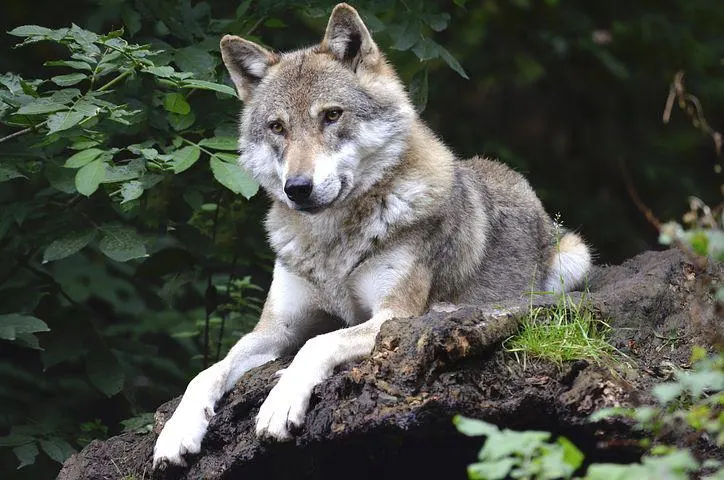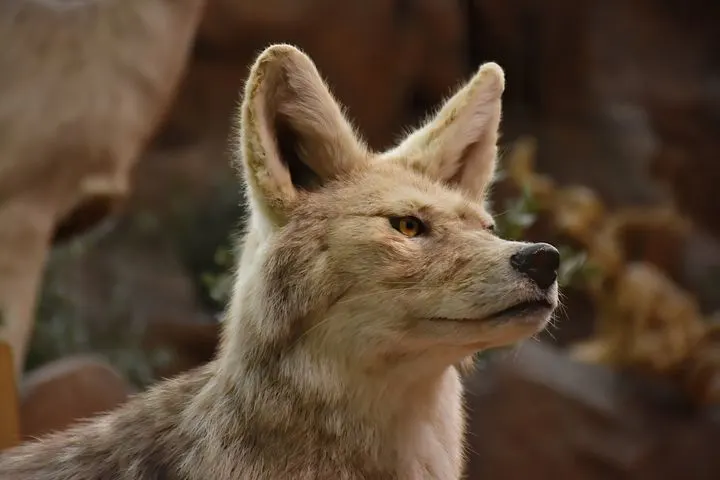Wolves and coyotes are two of the most widely recognized members of the canine family. They share many similarities in terms of their physical appearance, habitat, and behavior, yet they are distinct species.
Wolves and coyotes are members of the dog family however, a wolf is comparatively larger, more round-faced, and furrier than a coyote.
Despite the many similarities between them, there are some fundamental differences that set them apart.
This article aims to explore these differences and learn more about the two species so without any further ado, let’s dig in!
Page Contents
ToggleComparison Between A Wolf And A Coyote
When it comes to physical appearance, wolves and coyotes are relatively similar, which can make it difficult to distinguish between the two species. However, there are some differences in their size, coloration, and features that can help to tell them apart.

Size
On average, wolves are larger than coyotes. Wolves can weigh between 70 and 130 pounds, while coyotes typically weigh between 20 and 50 pounds.
Additionally, wolves have longer legs, bigger paws, and wider chests than coyotes.
Coloration
Wolves and coyotes can vary in color, but generally, wolves are gray, black, or white, while coyotes are tan, gray, or brown. Wolves also tend to have thicker coats than coyotes.
Features
Wolves have broader heads and a more prominent brow ridge than coyotes. Their ears are also shorter and more rounded than coyotes’.
Coyotes, on the other hand, have a more slender appearance, with a narrow snout and pointed ears.
| Wolves | Coyotes |
| Larger in size and more muscular build | Smaller in size and more slender build |
| Broadhead and more prominent brow ridge | Narrow, pointed snout |
| Short, rounded ears | Long, pointed ears |
| Live in packs with a well-defined social structure | Live in smaller family groups |
| Found in areas with a larger prey base | More adaptable to different habitats |
| Top predators in many ecosystems, help regulate populations of prey species | Help control populations of small mammals like rodents and rabbits |
| Have a more complex communication system, including vocalizations and body language | Use vocalizations, body language, and scent marking to communicate |
| Not typically found in urban or suburban areas | Can be found in urban and suburban areas |
| Wolves are stronger and more dangerous than a coyote | Coyotes are weaker than wolves |
| Red wolves are the most endangered wolves | Coyotes are far away from being endangered |
In terms of behavior, wolves, and coyotes are also similar in many ways. They are both social animals that live in packs and are known for their hunting abilities.
However, there are some differences in their behavior that can help to distinguish between the two species.

Social behavior
Wolves live in packs that can range in size from just a few individuals to more than 20. Coyotes, on the other hand, are more solitary animals and typically hunt alone or in small tribes.
Hunting behavior
Both wolves and coyotes are skilled hunters, but they use different tactics when hunting. Wolves are known for their ability to take down large prey, such as deer and elk, while coyotes typically hunt smaller prey, such as rodents and rabbits.
Wolves also tend to hunt in a coordinated effort, with members of the pack working together to take down their prey, while coyotes typically hunt alone or in pairs.
Vocalization
Wolves are known for their distinctive howl, which is used to communicate with other members of the pack. Coyotes also howl, but their howls are typically higher-pitched than those of wolves.
Contrast Between Wolves And Coyotes
Habitat
Both wolves and coyotes are found throughout North America, but they have different habitat requirements.
Wolves: Wolves are found in a variety of habitats, including forests, grasslands, and tundra. They are typically found in areas with a large prey base, such as deer and elk.
Coyotes: Coyotes are more adaptable and can be found in a variety of habitats, including forests, grasslands, deserts, and urban areas. They are typically found in areas with a smaller prey base, such as rodents and rabbits.

Conservation Status
Wolves and coyotes have different conservation statuses and both face different threats.
Wolves: Wolves were once widespread throughout North America but were nearly wiped out by hunting and habitat loss.
Today, gray wolves and red wolves are listed as threatened species under the Endangered Species Act in the lower 48 states, with populations found in only a few states. Mexican wolves, a subspecies of gray wolves, are listed as endangered too.
Coyotes: Coyotes are not currently listed as a threatened or endangered species. They are one of the most adaptable animals in North America and have been able to thrive in a variety of habitats.
Human Interaction
Humans have a significant impact on both wolves and coyotes, and their interactions with these animals have shaped their populations and behavior.
Wolves: Wolves have a complicated relationship with humans. Historically, wolves were hunted extensively, leading to their near-extinction in many areas.
Today, red and grey wolves face threats from habitat loss, persecution, and conflicts with humans over livestock depredation. However, wolves are also valued by many people for their ecological importance and cultural significance.
Coyotes: Coyotes are one of the most persecuted animals in North America. They are often viewed as a nuisance species and are subject to widespread hunting, trapping, and poisoning.
Despite these efforts, coyotes have been able to thrive in a variety of habitats, and their populations continue to grow.
FAQs (Frequently Asked Questions)
How can you tell the difference between a wolf and a coyote?
It can be challenging to tell the difference between a wolf and a coyote, but there are some key features to look out for.
Wolves are typically larger and have a broader head and more prominent brow ridge than coyotes. They also have shorter and more rounded ears than coyotes.
Coyotes, on the other hand, are usually smaller and have a more slender build than wolves. They also have longer, more pointed ears and a narrow, pointed snout.
Are coyotes and wolves able to mate and produce offspring together?
While coyotes and wolves are closely related, thus they are able to produce offspring together. Coyotes and wolves can interbreed to produce hybrid offspring known as “coywolves.”
Why are wolves and coyotes important to ecosystems?
Wolves and coyotes play important roles in ecosystems by helping to control populations of prey species. Wolves are top predators in many ecosystems and help to regulate the populations of prey species like deer and elk.
Coyotes also play a similar role in controlling populations of small mammals like rodents and rabbits. Additionally, both wolves and coyotes help to maintain healthy and balanced ecosystems by creating niches for other species to thrive in.
Are wolves and coyotes threatened or endangered species?
While wolves and coyotes face many threats from habitat loss, persecution, and conflicts with humans, they are not currently considered threatened or endangered species.
However, some subspecies of wolves, such as the Mexican gray wolf and red wolf are listed as endangered, and their populations are closely monitored and managed to prevent further decline.
Coyotes, on the other hand, are generally considered to be a species of “least concern” due to their fine adaptability.
Conclusion
While wolves and coyotes share many similarities, there are some fundamental differences between these two species.
Wolves are larger, live in packs, and are found in areas with a larger prey base, while coyotes are smaller, live in smaller family groups, and are more adaptable to different habitats.
While there is no distinct dividing line between wolves and coyotes, understanding these differences can help us appreciate and protect these two important species.
Additionally, both wolves and coyotes play important roles in the ecosystems in which they live, and their presence is vital to maintaining healthy and balanced ecosystems. It is important that we continue to study and protect these animals to ensure that they can continue to thrive in the wild for generations to come.

